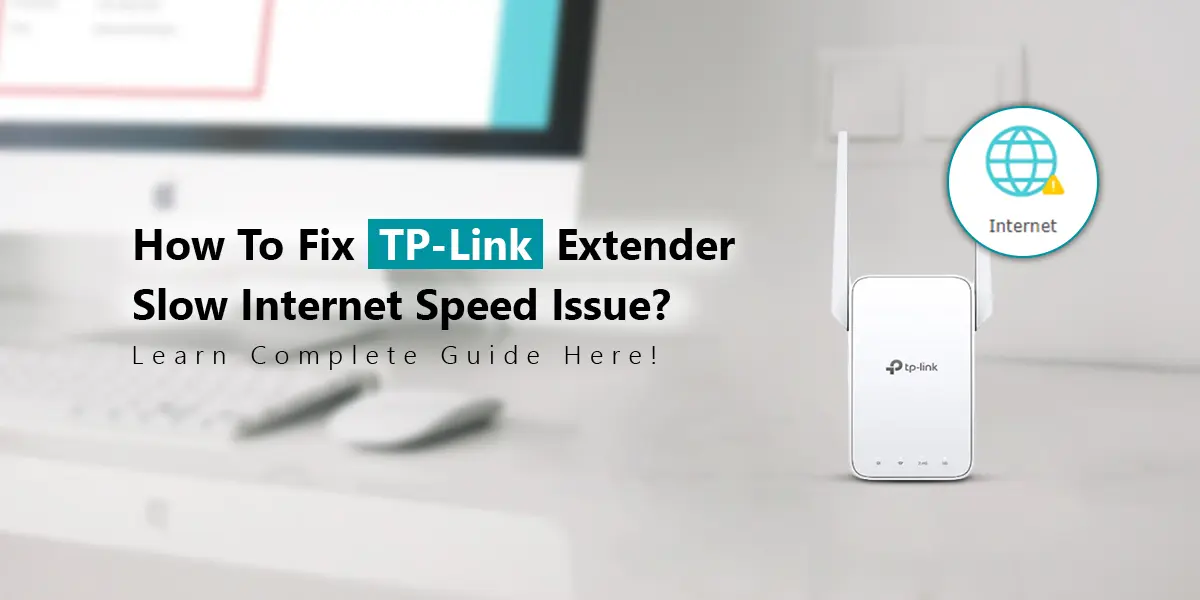
How To Fix TP-Link Extender Slow Internet Speed Issue?
Understanding The Causes of Slow Internet Speed Using TP-Link Extenders
Before we go into the answers it’s vital to understand the potential causes of TP-Link Extender Slow Internet Speed Issue:
- Intrusion: Microelectronic devices barricades and even other Wi-Fi networks can interrupt the signal.
- Placement: Your extender’s location in relation to your router and devices might have a significant impact on performance.
- Firmware difficulties: Outdated firmware can lead to performance difficulties.
- Network Congestion: When multiple devices use the network at the same time speeds slow down.
- Bandwidth Limitations: The extender’s performance is affected by the bandwidth of your main router.
- Configuration Issues: Incorrect extender settings can result in inferior performance.
Steps To Fix TP-Link Extender Slow Internet Speed Issue
1. Optimal Extender Placement
Placement is critical for optimum effectiveness. Here are a few tips:
- Place the extender equidistant amongst your router and the part where you want supplementary exposure.
- Keep impediments to a minimum between the extension and the router.
- Placing the extension higher up can typically result in improved signal reception.
2. Update Firmware
Outdated firmware might cause performance concerns. How to upgrade the firmware?
- Login to the TP-Link web edge. Pass in the extender IP address into browser.
- Circumnavigate to Firmware Update. This is normally located under the System Tools section.
- Download and install updates. Check for the most recent firmware and follow the instructions to update.
3. Change Wireless Channels
Interference from other Wi-Fi networks can reduce your internet speed. Changing the wifi channel can be helpful.
- Log in to the TP-Link Web Interface.
- Go to Wireless settings.
- Look for the Channel option.
- Change the channel.
- Choose a less congested channel. Channels 1 6 and 11 are frequently recommended.
4. Reduce Interference
- Minimize interference.
- Microwaves and cordless phones might interfere with Wi-Fi transmissions.
- Using Dual Band Extenders.
- If possible, choose the 5 GHz band as it is less congested than the 2.4 GHz band.
5. Check The Bandwidth Settings
Ensure that your extender does not limit bandwidth:
- Login to the TP-Link Web Edge.
- Circumnavigate to Bandwidth Control Settings. Ensure that the settings are configured to give appropriate bandwidth.
6. Configure QoS.
Quality of Services can arrange detailed types of traffic hence enhancing performance for key applications.
- Login to the TP-Link Web Edge.
- Establish priorities for devices or types of traffic.
7. Use A Wired Connection.
- Consider connecting to the extender using an Ethernet cable if your gadget requires a reliable connection.
- This can result in a more unchanging and quicker connection than WiFi.
8. Reboot Your Devices
- Sometimes simply rebooting your extender router and gadgets will alleviate performance problems.
- This can resolve any temporary difficulties or conflicts.
9. Reduce Network Load
Numerous devices utilizing the network at the equivalent time can sluggish your internet linking. Try this:
- Limit background applications.
- Make sure devices are not running unneeded background applications that use bandwidth.
- Schedule bandwidth-intensive tasks for off-peak hours.
10. Factory Reset
If all other things flop a factory reset can be useful. This restores the extender to its default settings:
- Clasp down the Reset Switch which is usually located on the back of the extender.
- Reconfigure the Extender. Repeat the tp link extender setup process to reconfigure your extension.
11. Upgrade Your Equipment.
- If your extender is obsolete, try upgrading to a newer type that supports the most recent Wi-Fi standards.
- Newer models provide improved performance and features.
Conclusion
Fixing TP-Link Extender Slow Internet Speed Issue requires a combination of optimal placement firmware updates and configuration changes. Following the methods indicated in this tutorial will dramatically improve the functionality of your extender allowing you to enjoy a quicker more constant internet connection. Remember the key to best performance is to ensuring that both your router and extender are properly positioned and configured.